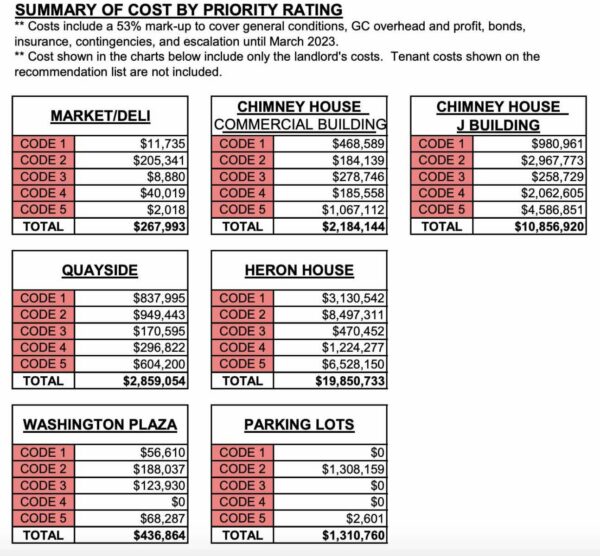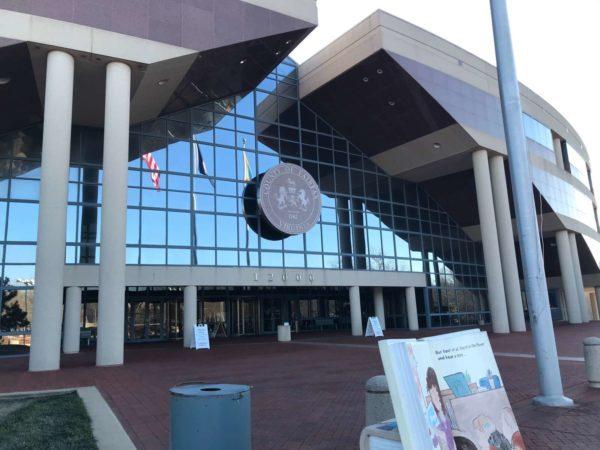
The historic Lake Anne area needs more than $37 million in repairs, according to a report released by the Fairfax County Department of Public Works and Environmental Services earlier this month.
An assessment by architecture firm Samaha Associates found that the property, which is managed by the Lake Anne of Reston Condominium Association, has major issues with aging infrastructure, including damage to concrete surfaces, brick buildings, and plumbing systems. Much of that damage and distress is visible to any passer-by.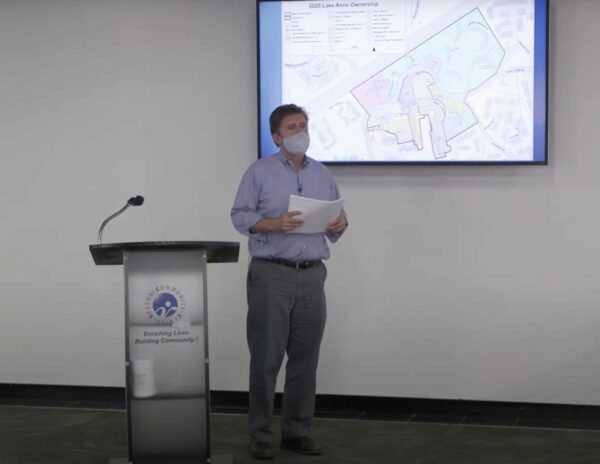
“Items not addressed in a timely fashion will cause further deterioration of the buildings and potentially create worse conditions and more costly repairs,” the report concluded.
Maintenance and infrastructure issues caught statewide attention when residents of the Quayside condominiums went without hot water for several months last winter.
Lake Anne was the first village center created and designed by Bob Simon in Reston. The village center was constructed between 1963 through 1967. The National Register of Historic Places has called the plaza the “the historic heart and soul” of Reston.
Hunter Mill District Supervisor Walter Alcorn held a meeting with residents and the condominium association Monday night to review the report and discuss next steps. He also met with residents in July.
The county will consider assisting stakeholders with a plan for revitalization and infrastructure improvements. But county officials stressed that community input is needed before a proposal is considered.
One option could include leveraging county assistance in exchange for the development rights of Lake Anne’s common area.
“This is a tremendous burden on the community,” Alcorn said, noting that a condominium association that manages 131 units cannot bear the financial burden of a full-blown revitalization effort alone.
Several options are on the table.
Individual residents and businesses were excluded from the assessment, which primarily examined five buildings, including the Market-deli, Chimney House, the plaza, Quayside and Heron House.
The firm broke down cost estimates for each deficiency, which was ranked by priority. A priority rating of one represents a life safety issue that should be addressed immediately while a rating of five can be addressed when feasible.
A complete breakdown of estimated costs is below. The most critical repairs are close to $20 million.
Items that received that rating included multiple National Electrical Code violations in several buildings, extensive cracking along concrete throughout the plaza, clogged drains, and deteriorating wood balconies at the Chimney House.
A retaining wall at the Quayside condominiums has also shifted and needs to be repaired or replaced. Additionally, the building’s water boiler needs to be replaced. Similar issues were flagged in the Heron House.
The firm visited the plaza several times in June and July this year to conduct the assessment. The assessment notes that costs are conservative, especially since water and sewer upgrades, ADA compliance and other issues were not considered in the precursory analysis.
The complete assessment is available online.

Afghan Evacuees Tax Northern Virginia Hospitals — The recent influx of Afghanistan evacuees through Dulles International Airport has taken a toll on the region’s hospitals, leading to issues with keeping track of patients and rising costs. As of yesterday (Tuesday), Fairfax County has taken 219 Afghan patients to local hospitals and will ask the federal government to pay the estimated $300,000 in personnel and transportation costs that it has accrued so far. [The Washington Post]
Food Starts Reston Apartment Fire — The Fairfax County Fire and Rescue Department responded to the 1800 block of St. Francis Street in Reston Town Center around 1 p.m. yesterday after getting reports of smoke issuing from the 16th floor of an apartment building. One person was checked for injuries from the fire, which appeared to have been started by food cooking on a stove. [Patch]
Deer Archery Program Returns This Weekend — “The Fairfax County Deer Management Archery Program begins Saturday, Sept. 11, 2021 and runs through Saturday, Feb. 19, 2022…The archery program began in FY 2010…to reduce and stabilize the white-tailed deer population in Fairfax County in efforts to minimize safety and health hazards and other impacts related to an overabundance of deer.” [Fairfax County Police Department]
Photo via vantagehill/Flickr

Labor Day weekend has almost arrived, unofficially bringing summer to an end with an occasion to recognize the achievement of workers and the labor movement.
For students, the weekend has already begun, since Fairfax County Public Schools has designated both today (Friday) and Monday (Sept. 6) as holidays.
While Reston Association’s summer pool season has mostly come to a close, a handful of pools will be open over Labor Day weekend, with the North Shore and Ridge Heights heated pools remaining open through Sept. 19.
RA announced on Tuesday (Aug. 31) that the North Shore, Ridge Heights, Lake Newport, and Glade pools will all open from noon to 7 p.m. on Saturday and Sunday (Sept. 4-5) as well as from 11 a.m. to 6 p.m. on Monday.
“We are happy that we were able to open and operate the majority of RA pools safely this summer for our members enjoyment,” RA Director of Recreation and Environmental Education Laura Kowalski said in an email. “In addition, RA swim lessons, water exercise and pool events were well attended. And of course, our annual end of season Dog Paddles for our furry friends was a big hit.”
Elsewhere in Fairfax County, many public facilities and services will be closed or have altered schedules for Labor Day. Here are some of the changes that Reston and Herndon residents should be aware of for the federal holiday:
Fairfax County Government
- County government offices will be closed on Sept. 6.
Fairfax County Courts
- The Fairfax Circuit, General District, and Juvenile and Domestic Relations District courts will all be closed on Labor Day.
Town of Herndon
- Town offices and the Herndon Community Center will be closed for Labor Day.
- There will be no recycling collection that day. Residents whose recycling is typically collected on Mondays will instead have pick-ups on Tuesday (Sept. 7).
- The Herndon Centennial Golf Course will be open on Monday from 7 a.m. to 7 p.m.
County Libraries and Recreational Facilities
- Fairfax County Public Library follows the same operating status as the general county government, so all branches will be closed on Labor Day.
- Nearly all Fairfax County RECenters will be open on Monday and follow their standard operating hours, which conclude at 6 p.m. The exception is the George Washington RECenter in Alexandria, which will be closed.
- The Colvin Run Mill and Sully historic sites, Green Spring Gardens in Alexandria, and all nature centers will be closed.
- The visitor center at Frying Pan Farm Park in Herndon will be closed, but the farm itself will be open from 9 a.m. to 5 p.m. The indoor arena will also be open from 9 a.m. to 9 p.m.
- All Neighborhood and Community Services facilities, including community, teen, and senior centers, will be closed from Sept. 4-6.
- The Reston Community Center Hunters Woods and Lake Anne facilities will both be closed on Monday.
Public Transit
- Fairfax Connector buses will operate on a Sunday schedule for Labor Day. Check the transit system’s website for the specific routes that will be in service.
- Metro will operate from 7 a.m. to midnight throughout Labor Day weekend, with trains serving 87 of 91 stations normally on the Red, Blue, and Silver lines and scheduled maintenance on the Orange, Yellow, and Green lines.
- On Labor Day, Metrorail, buses, and MetroAccess will follow a Sunday service schedule with off-peak fares and free parking in effect all day.
County Trash and Recycling
- Labor Day will not affect trash and recycling collections for county customers. However, the customer service center will be closed in observance of the holiday.
- The I-66 Transfer Station and I-95 Landfill Complex will both be open.
Photo via Reston Association/YouTube
Thousands of Afghan Refugees Arrive At Dulles — About 14,000 people evacuated from Afghanistan since the Taliban’s takeover on Aug. 15 have arrived in Virginia through Dulles International Airport, according to Gov. Ralph Northam, who called the effort “one of the largest airlifts in history” on Friday (Aug. 27). The federal government has set up a COVID-19 vaccination site for the new arrivals, just 20 of whom have tested positive so far. [WTOP]
New Survey on Countywide Strategic Plan Opens — Fairfax County is seeking more community input on its proposed Countywide Strategic Plan, which will serve as a guide for the county’s priorities over the next 10 to 20 years. A fourth community survey is now available in multiple languages until Sept. 24, with the Board of Supervisors expected to take action on a final plan in October. [Fairfax County Government/Twitter]
Man Arrested for South Lakes BB&T Robbery — A man believe to be behind the Tuesday morning robbery of the BB&T Bank in South Lakes Village Shopping Center was arrested in Richmond, according to the weekly crime report. The suspect was arrested on Thursday (Aug. 26) on unrelated charges but now also faces two counts of robbery. He is awaiting extradition to the Fairfax County Adult Detention Center. [Patch]
Fairfax County Police Recruit Two New Canines — Bloodhound pups Duke and Luna will soon start a year-long training program to prepare them to join the Fairfax County Police Department’s K-9 unit, which currently consists of 28 dogs, including three other bloodhounds, and 15 human officers. The dogs will help the department find “critically missing people,” including people with dementia, children, and individuals who might be suicidal. [The Washington Post]
Reston Association to Hold Listening Sessions Next Month — “Reston Association will be hosting a series of Listening Sessions, one for each district, over the coming weeks on Zoom. These meetings will allow the Board to engage with each district and listen to the concerns, comments, and suggestions members have for RA.” [RA/Twitter]
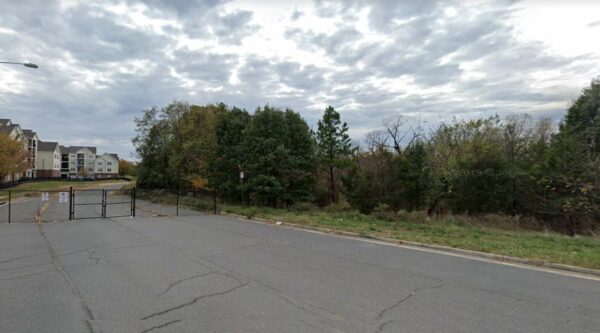
Faced with challenges from providing affordable housing to mitigating flooding, Fairfax County has its hands full, but it’s currently armed with vacant property assessed at tens of millions of dollars.
Currently tax-exempt, the properties could be used for commercial development, environmental preservation, housing projects, recreation, or stormwater drainage, among other purposes.
“There is a critical shortage of affordable housing options in Fairfax County,” Dranesville District Supervisor John Foust said when asked about what the county should do with its vacant properties.
The total financial value of vacant, county-owned properties exceeds $50 million, as calculated based on a public records request and assessments in an online county database for over 100 parcels that could be used for commercial, residential, or other uses.
It wasn’t immediately clear if other restrictions, such as environmental issues, setbacks, and prior plans, limit the use of those properties.
The $50 million-plus figure includes at least $10 million in assessed property that was listed as vacant but nonbuildable, but it excludes properties in floodplains as well as parcels already in use, such as parking lots, parks, or school areas.
One of the largest vacant property acquisitions is across from the Fairfax County Government Center: a 2.6-acre property bordered by Legato Road and Post Forest Drive that cost around $50 million in 1994. It currently has an assessed value of around $11,450.
“One of the elements of the County’s Housing Strategic Plan is to utilize vacant parcels as well as to repurpose land, such as existing parking lots, to increase the supply of housing,” Foust noted by email.
Created in 2018, the Communitywide Housing Strategic Plan calls on Fairfax County to make vacant or underutilized, publicly owned land available for affordable and mixed-income housing “to expand housing options without direct public financial subsidy” through public-private partnerships.
Currently, the Fairfax County Redevelopment and Housing Authority has three such properties that are slated to be developed through public-private partnerships:
- The Oakwood Senior Housing Project, which will provide affordable units for the elderly near Alexandria
- Autumn Willow Senior Housing, a 10.88-acre property near Centreville
- The Route 50/West Ox Affordable Housing Project near Fair Oaks Mall
The county’s more sizable vacant lots include five adjacent properties along South Van Dorn Street in Franconia that occupy around 3.7 acres located near Thomas A. Edison High School.
The county also has a 9.63-acre parcel near the Innovation Center Metro station that will eventually open in Herndon as part of the much-delayed Silver Line extension.
Foust says part of the property includes a community playing field, but its proximity to the Metro station could make it a candidate for future affordable housing.
“Placing affordable housing on the site could be a good use of the land,” he said. “If that came about, the playing field would need to be relocated.”
In McLean, the county has two properties in a residential neighborhood at 7135 and 7139 Old Dominion Drive that have been assessed at a combined $2.06 million. They are slated for a traffic improvement project at the intersection of Old Dominion and Balls Hill Road. The project is currently in the design phase.
Board of Supervisors Chairman Jeff McKay said in a Washington Business Journal story about affordable housing that land is the county’s “single most useful tool.”
“Reallocation of Board-owned property can occur in a number of ways,” McKay said in a statement. “However it is often at the request of a County agency and is followed by an extensive review of the property. Within the last year, the Board was proud to authorize the transfer of two properties to the Fairfax County Redevelopment and Housing Authority for the potential creation of affordable housing.”
Photo via Google Maps
All Fairfax County government workers will be required to get vaccinated against COVID-19, the county announced today (Friday).
Employees who don’t get vaccinated, including those who request an exemption for medical or religious reasons, will be required to undergo weekly COVID-19 testing to remain employed.
The timing of when the mandate will take effect remains unclear, as the announcement says only that it will begin this fall.
“We know vaccinations save lives and that these vaccines are safe and effective,” Board of Supervisors Chairman Jeff McKay said in a statement. “Throughout the pandemic we have focused on measures to keep our employees and our community safe, and this is another key piece of that effort. As one of the largest employers in Virginia, and one that has successfully and consistently stressed to our residents the importance of being vaccinated, we must practice what we preach.”
The Board of Supervisors voted unanimously on July 28 to direct County Executive Bryan Hill to explore the possibility of a vaccine requirement while developing an official return-to-office plan for the county government.
Fairfax County Public Schools announced this morning that it will require employees to get vaccinated, starting in October, though the new school year will begin on Monday (Aug. 23).
“We join organizations including Fairfax County Public Schools, public universities, privately held companies, and our federal and local governments, taking these measures to help protect employees and the public from this significant health threat,” Hill said in a statement. “Since the beginning of the pandemic, Fairfax County has focused on policies and procedures that support the health and well-being of our staff and the community, and we will continue to do so.”

Fairfax County residents who drive used cars may get a higher vehicle tax bill this year than they were anticipating.
An unusual rise in the value of used cars will result in an average tax increase of $25 for about 12% of county residents, primarily those who own vehicles valued at $20,000 or less, the Fairfax County Department of Tax Administration (DTA) said in a news release yesterday (Tuesday).
“This COVID thing is really making an impact on everything here,” said Juan Rengel, director of the DTA’s Personal Property and Business License Division. “What’s happening with vehicles [is] we are experiencing an increase of about 5% in vehicle values of used cars. Typically, used cars depreciate in value year over year. That’s not the case this year.”
According to Fairfax County, the increase in assessments stems from a reduced supply of vehicles due to global shortages in automobile parts, particularly microchips, and an uptick in demand for used cars over newly manufactured cars from both customers and dealerships.
People holding onto their used cars instead of selling them, low turnover in fleets for rental car companies, and dealerships compensating for the shortage in new vehicles by filling out their lots with used ones are all putting pressure on the used car market, driving up prices, Rengel says.
He added that low interest rates have also been a factor, enabling more people to obtain loans to purchase cars.
Like the rest of Virginia, Fairfax County calculates a vehicle’s assessed value based not on the purchase price, but rather, on the market value of its specific year, make, and model over all the sales for that vehicle as of Jan. 1.
“Whatever the car value is as of January 1, that’s what we use,” Rengel said.
Vehicle taxes can be appealed if the owner believes their vehicle has been overassessed based on body damage, rusting, or high mileage, according to the DTA.
Fairfax County’s current vehicle tax rate is $4.57 per $100 of assessed value. Personal property tax bills will start to go out in the mail soon, with payment for existing and new vehicles registered in the county prior to July 1 due on Oct. 5.
Rengel notes that Virginia partially relieves the tax burden on owners by subsidizing a portion of the first $20,000 of assessed value for vehicles utilized for personal use. This year, the state will pay 57.5% of the tax bill, though owners are required to certify to the county annually that their vehicle remains qualified to receive the subsidy.
According to Rengel, Fairfax County projects that it will collect $496.7 million in personal property tax revenues this year, all of which will go into the county’s general fund that supports schools, public safety, human services, and other government functions.
Though it’s unusual for car values to go up over the course of a year, the ongoing uncertainty of the pandemic means vehicle taxes could increase again next year.
“If things continue the way they are, we can see prices going up again in 2022, but of course, we’re speculating for 2022 at this point,” Rengel said.
Photo via Obi Onyeador/Unsplash
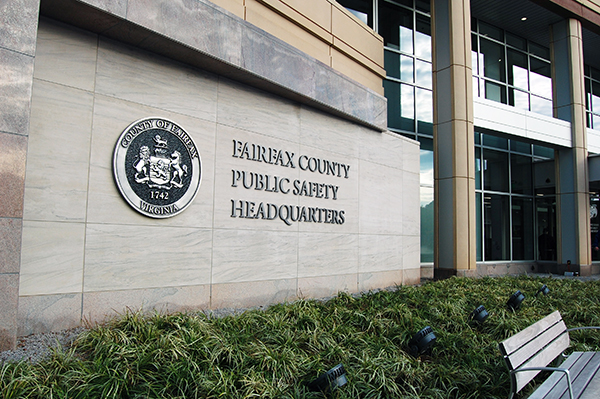
The Fairfax County Police Civilian Review Panel, a citizen-led board intended to help with police accountability, is getting an executive director.
The Fairfax County Board of Supervisors approved the change on July 27 at the urging of the review panel, which is facing increasing caseloads and seeking to gain investigatory powers.
“We’re thrilled that this new position will help us maintain our independence,” Civilian Review Panel Chair Jimmy Bierman said, thanking Board of Supervisors Chairman Jeff McKay and Lee District Supervisor Rodney Lusk, who chairs the board’s public safety committee.
Established in December 2016, the civilian review panel reviews Fairfax County Police Department investigations into civilian complaints with allegations that a police officer abused their authority or engaged in misconduct.
While the panel can make recommendations regarding law enforcement policies and practices, it was not granted the authority to conduct its own investigations.
The review panel, which consists of nine volunteers, documented in February its need for an executive director in an annual report and a four-year review, a document that Bierman spent three months of 40-hour weeks to develop.
The executive director will help the panel document and summarize investigations. Currently, the panel reviews police investigations in person and writes lengthy, time-consuming reports, which means its efforts are heavily dependent on its chair’s schedule.
Bierman, an attorney, likens the change to a congressional committee relying on staff to help draft materials or a federal judge using legal staff to write bench memos.
“It adds to the professionalism of the panel,” he said. “We want to be fiercely independent.”
Since its creation, the review panel has also relied on staff in the office of the independent police auditor, which will now send one position to the panel for the executive director.
Bierman says the staffing switch will help the panel maintain a good working relationship with police by ensuring the independent police auditor’s resources are not overtaxed.
The change to the panel comes after the Virginia General Assembly adopted a law last year that officially permitted localities to create police oversight boards with the power to investigate incidents, make binding disciplinary determinations, and more.
Bierman says the law shows the Commonwealth is serious about supporting independent oversight bodies for police.
The new executive director won’t have independent investigatory powers, but the position could lay the groundwork for the Board of Supervisors to update the panel’s bylaws to give it more authority, as allowed by the new state law, according to Bierman.
The person hired for the new position will be paid $100,000 to $150,000 per year and report directly to the board of supervisors. Springfield District Supervisor Pat Herrity was the only supervisor to oppose the measure.
“I voted against this motion because I didn’t support the original motion to form the Civilian Review Panel as we had an Independent Police Auditor, which is where most significant reviews and recommendations for reforms have come from,” Herrity said in a statement.
On Sept. 28, the board of supervisors’ public safety committee is slated to hear a presentation about the review panel along with recommendations on further reforms in line with the panel’s four-year review. Read More

After a hiatus due to pandemic-related school closures, Fairfax County is not only reviving its School Age Child Care (SACC) program, but expanding it with two new locations, both of them in Herndon.
With Fairfax County Public Schools planning for five days of in-person learning starting Aug. 23, the county-run child care program will be available at 142 schools, including new centers at Clearview and McNair Upper elementary schools, Fairfax County Board of Supervisors Chairman Jeff McKay announced yesterday (Thursday).
“We hope to quell some anxiety today and give our working parents in particular confidence knowing that the Fairfax County government and our Fairfax County Public Schools have worked very closely together over many months to ensure that our kids can return to school and return to our SACC program,” McKay said.
SACC provides before and after-school care for children from kindergarten through sixth grade. Run by the Fairfax County Office for Children, the program operates out of public elementary schools as well as the Key and Kilmer centers, which focus on youth aged 5-21 with multiple disabilities.
As a result, when FCPS initially closed school doors as COVID-19 spread in March 2020, SACC centers were shuttered as well, leaving many families to juggle full-time work and a bumpy introduction to virtual learning on their own.
The county resumed offering some child care services in the summer of 2020 with its Camp Fairfax program, which serves first through seventh graders. The day-long camps were held in school buildings with social distancing and other health measures in place.
When FCPS opted for an all-virtual start to the 2020-2021 school year, the county launched a new Supporting Return to School (SRS) program that essentially functioned like a full-day version of SACC, providing care before and after school hours along with distance learning support.
According to McKay, the Camp Fairfax and SRS sites were chosen based on where the need for child care services was greatest, focusing on children whose parents were unable to stay at home with them or who otherwise lacked structured support during the day.
Just over 1,000 children have enrolled in Camp Fairfax, which returned this summer with smaller sites, Office of Children Director Anne-Marie Twohie said at yesterday’s news conference, which was held at one such site in Centreville’s London Towne Elementary School.
In comparison, the program typically drew over 4,000 children before the pandemic.
McKay says the Camp Fairfax and SRS programs helped the county understand how child care could be provided safely, experience that will be crucial when the full-scale SACC program starts next month.
“The need for high-quality school-age child care has indeed never been greater, and the extended site availability this year will help meet these needs,” said Fairfax County School Board Chair Stella Pekarsky, who represents the Sully District.
Twohie says SACC rooms are generally added in conjunction with elementary school construction and renovation projects.
Work on both McNair Upper (2410 Fox Mill Road) — a new building intended to relieve crowding at McNair Elementary School — and renovations at Clearview (12635 Builders Road) is nearing completion.
With COVID-19 cases on the rise again, McKay and Pekarsky stressed the importance of vaccinations for everyone who is eligible in ensuring that schools and SACC can fully open on Aug. 23 as planned.
“We are continuing to build toward normalcy, full school days, full SACC programs, the freedoms that we’ve enjoyed over the last several months,” McKay said. “We have to, as a community, roll up our sleeves, get to those remaining people who aren’t vaccinated, get them vaccinated so we can continue down the right path in Fairfax County.”
While FCPS isn’t requiring vaccinations for students or staff, the school system said earlier this week that everyone must wear face masks when students are inside school buildings, regardless of their vaccination status.
Noting that at least 90% of teachers and staff are vaccinated, Pekarsky suggested that FCPS could follow the county government’s lead in potentially instituting a vaccine mandate for its employees at some point.
“We are continuing to offer our teachers the opportunity to get vaccinated,” she said. “We will collaborate with county government to explore if we will make them mandatory sometime in the future, but right now, they are not.”
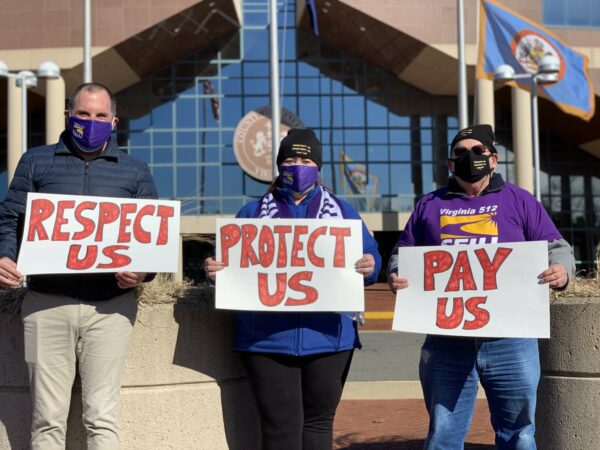
One in seven Fairfax County employees can’t afford an adequate standard of living in the county where they work, a report released last week by a Richmond-based think tank found.
Published on July 21 by The Commonwealth Institute for Fiscal Analysis (TCI), which advocates for public policy that advances racial and economic justice in Virginia, the “Rebuilding Stronger for Fairfax County” report comes as county leaders continue discussions on a collective bargaining ordinance for public employees.
Comparing government workers’ salaries to the cost of living and what their private-sector counterparts earn, the study authors say their findings support the need for collective bargaining, where employee unions can negotiate compensation, working conditions, and other terms of their employment.
“The fair and clear standards provided by unionization particularly help Black and Latinx workers,” TCI Research Director Laura Goren said in a statement. “Women, who make up the majority of local government workers, would also particularly benefit from collective bargaining.”
Using the Economic Policy Institute’s family budget calculator, TCI determined that a single person would need an annual income of at least $57,052 to afford a “modest yet adequate” standard of living in Fairfax County, including housing, transportation, health care, taxes, and other necessary expenses.
A family with one parent and two children would need to earn at least $106,395 a year.
According to the report, however, the bottom 20% of Fairfax County’s workforce in terms of salary, including part-time employees, make between $40,000 and $60,000 annually, leaving them unable to support themselves.
Only the top 20% of workers, who earn under $120,000, can cover the cost of living for a family of three.
The findings came after TCI released a similar report on Loudoun County, where one in five county workers can’t afford an adequate standard of living. The Board of Supervisors there voted on July 20 to proceed with crafting a collective bargaining ordinance.
According to TCI, public employees in Virginia are typically paid 29.9% less than what they would get in the private sector, a gap that widens to 33.4% in Northern Virginia. When pension and health care benefits are considered, the difference in compensation narrows slightly to 28% for the Commonwealth as a whole.
As the cost of living has risen, so have turnovers and vacancies, which went from 3.4% of all Fairfax County government positions in fiscal year 2007 to 8% of all positions in FY 2016, according to a county “lines of business” review of employee compensation.
While it won’t close the gap between public and private wages, the TCI report says giving public workers the ability to collectively bargain would help address inequities, boosting pay by 5 to 8%.
“This report provides rigorous research that backs up what essential workers have always known to be true,” Tammie Wondong, president of SEIU Virginia 512’s Fairfax County chapter, said. “Having a seat at the table through collective bargaining allows us to advance equity and build an even stronger community where every working family can thrive.”
SEIU’s Fairfax County Government Employees Union Chapter, which represents more than 2,000 workers, has been advocating for a collective bargaining ordinance since the Virginia General Assembly passed legislation giving localities that authority in 2020, though the law didn’t take effect until May 1 of this year.
County staff released an initial draft ordinance on May 25, and the Fairfax County Board of Supervisors has been debating the scope and details of the proposal for the past two months. The most recent draft came before the board’s personnel committee on July 20.
Board of Supervisors Chairman Jeff McKay echoed Wondong’s sentiments, saying the TCI report confirms that collective bargaining will reduce inequity, support quality jobs, and improve county services.
“I’m proud of the steps we’ve taken to ensure a great county workforce, including a $15 living wage, paid family leave, initiatives to increase workforce housing, and a strong retirement system,” McKay said. “Collective bargaining will further help us attract and retain great employees to ensure we continue delivering quality public services for our community.”
Fairfax County Human Resources Director Cathy Spage said at last week’s committee meeting that when the board meets on Sept. 14, county staff will ask it to authorize a public hearing on the proposed collective bargaining ordinance on Oct. 5.
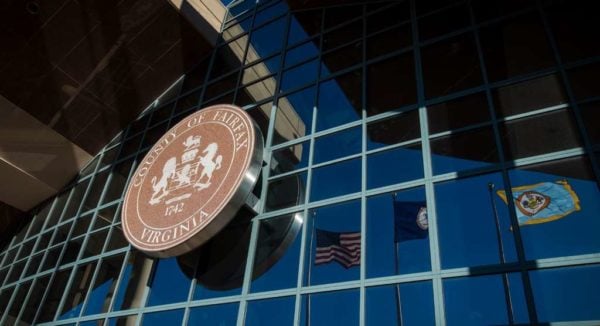
Fairfax County will use an estimated $10 million in COVID-19 relief money for another major grant program aimed at helping community partners keep their doors open.
The Board of Supervisors approved the Active and Thriving Community Grants Program at its meeting yesterday (Tuesday), where grants will range from $2,000 to $18,000 depending on the size of the business or nonprofit.
While businesses have pushed to reopen, many continue to struggle, and COVID-19 concerns persist. The grants target child care providers, community-based safety net providers, youth recreational or educational programs, youth athletic groups, and pools.
“As someone who visits a child care center everyday, they’re still operating under COVID restrictions that other businesses aren’t,” Braddock District Supervisor James Walkinshaw said during the board meeting. “So, they’re still dealing with that in terms of capacity and PPE [personal protective equipment] and masking.”
County staff reported that many community-based organizations “continue to struggle economically” due to COVID-19 and most have had to cancel or significantly alter major fundraising events.
“For many, giving levels have not returned to prior levels,” county staff wrote in the meeting agenda. “For many donors, giving patterns have changed. Even where giving has increased, it has not made up for lost revenue or increased expenses.”
Fairfax County Neighborhood and Community Services Deputy Director Sarah Allen told the board that the application period for the new grant program will launch by the end of August.
To be eligible, recipients will be required to show that they had a 15% decline in gross revenue in 2020 compared to 2019 or a 15% increase in expenditures directly tied to costs due to the pandemic.
The new grants are projected to allocate:
- $4.3 million for child care providers
- $1.9 million for community-based safety net providers
- $1.8 million for youth recreational or educational programs
- $1.5 million for youth athletic organizations
- $500,000 for pools
“A lot of these organizations survived through the pandemic because the…volunteer board members or the parents or community members involved dipped into their own pockets to keep things going so they didn’t have to go out of business,” Walkinshaw said.
The money comes as the county is finalizing awards for its PIVOT program, which will provide over $24.4 million in grants from the American Rescue Plan Act to businesses in the retail, food, and lodging sectors and other organizations financially affected by the pandemic.
When the county created the PIVOT program on June 8, staff were also looking for ways to provide additional assistance. A county survey of child care programs conducted in March found that over half of respondents did not know how long they would be able to stay open without financial support.
“The potential closure of child care programs could come at a time when more parents are returning to work, impacting working parents and their children, employers, and the child care workforce and their families,” the staff report said.
In awarding the grants, the county expects to use a priority measure related to vulnerable populations to pick recipients in the child care and pool categories. The remaining awards would be determined by a lottery system.
It wasn’t immediately clear how exactly the priority measure would work, but the county said staff will look at the social and economic conditions that made populations more vulnerable to COVID-19 as well as recent economic, health, and other data relevant to the pandemic’s impact.
Similar to the PIVOT grants, the county will use a third-party vendor — the Latino Economic Development Corp. — for the online grant administration portal and awards. Advertising and outreach in multiple languages will begin before the August launch.
“This grant program will prioritize disproportionately impacted populations and communities wherever possible,” county staff said.
Photo via Fairfax County/Facebook
(Updated at 11:30 a.m.) Fairfax County could require all of its employees to get vaccinated against COVID-19 when they return to offices this fall.
During their meeting today (Tuesday), the Fairfax County Board of Supervisors unanimously approved a motion brought by Chairman Jeff McKay directing County Executive Bryan Hill to evaluate whether to implement a vaccine mandate for the county’s 12,000 government employees, who range from library staff to police and solid waste workers.
While the county has reported relatively high vaccination rates, with almost 80% of adults having gotten at least one dose, some people who are eligible for the vaccine are choosing not to get it because of “false information,” according to McKay.
“Getting vaccinated is an act of public charity,” McKay said. “It’s not just about protecting you, but protecting everyone that you work with, every county resident that seeks our services, and everyone that works in our community.”
McKay confirmed that Hill is currently developing a plan for county government employees to return to offices in September.
The board directed Hill to consider providing some exemptions from the vaccine mandate for “religious and medical purposes” as well as requiring face masks and weekly COVID-19 testing for employees who do not qualify for an exemption and continue to refuse to get vaccinated.
In introducing the motion, McKay cited the growing prevalence of the delta variant, which now makes up more than 80% of all new cases in the U.S. and an estimated 69.4% of cases in the mid-Atlantic region, including Virginia, according to the Centers for Disease Control and Prevention.
Like elsewhere in the country, Fairfax County has seen a rise in cases throughout July.
McKay noted that the need to bring COVID-19 case levels back down is especially urgent as Fairfax County Public Schools hopes to reintroduce five days of in-person learning when the new school year starts in August.
“What is happening right now with the delta variant in our community is scary for so many people, and I know it’s scary for our public school system,” McKay said. “Keep in mind that there are thousands of kids in elementary school that don’t have the luxury of getting vaccinated, and we need to do it for them. We need to make sure that our schools can reopen fully and safely, and we all need to get vaccinated to ensure that that happens.”
The board’s move comes as the CDC is expected to announce this afternoon a reversal of its policy allowing unvaccinated people to go maskless indoors, as reported by The Washington Post and other national outlets.
David Taube contributed to this report.

The Countywide Strategic Plan meant to establish a community-driven vision for Fairfax County for the next 10 to 20 years is edging closer to an expected adoption by the Fairfax County Board of Supervisors.
The county hosted a community update and feedback session on Wednesday (July 21) to gather feedback about potential indicators for success among nine priority areas listed in the proposed 56-page strategic plan.
It was part of the fourth phase of engagement initiated by the county. Two rounds were held in 2019 before the process was paused in 2020 to evaluate COVID-19 impacts. Two additional phases were added for 2021, with the third survey phase wrapping up in April.
The Board of Supervisors is expected to take action in October, according to countywide strategic plan coordinator Aimee Brobst, who led the meeting.
While there are no outreach plans to solicit direct public comments on the final text before it is presented to the board, Brobst said community engagement will continue after the plan is adopted. At that point, the county’s approach will “likely shift” to a more targeted focus on each priority area in addition to seeking feedback on the plan as a whole.
“We definitely want to use the feedback that we’re collecting here for the purpose of informing the strategic plan,” Brobst said. “But as we look forward, beyond even when the plan is adopted by the Board of Supervisors, we want to make sure that this isn’t something that stops once the plan is adopted, and we are being very thoughtful and very intentional about hearing from as many people as possible as we move forward.”
The nine priority areas of the plan include:
- Cultural and recreational opportunities
- Economic opportunity
- Effective and efficient government
- Empowerment and support for residents facing vulnerability
- Health and environment
- Housing and neighborhood livability
- Lifelong education and learning
- Mobility and transportation
- Safety and security
A poll to gauge attendees’ preferred focus areas within those categories found particular interest in access to cultural and recreational opportunities; economic stability and mobility for all people; financial sustainability and trustworthiness; and access and utilization of services.
Other top indicators were air, water and land quality; housing affordability and quality; career-based training and early childhood education; accessibility, affordability and equity for mobility and transportation; and reliability and security of critical infrastructure.
County staff noted that the plan is meant to be flexible with the ability to adapt over time, serving as a template to help the board determine its priorities and understand what community members think is important.
Acknowledging the rather sparse attendance at the meeting, Brobst said that the shift to virtual meetings over the past year due to the COVID-19 pandemic has pushed the county to rethink and expand the tools it uses to engage the public.
“In addition to everything we’re doing that we think makes sense — using every channel that we have available to us as the county — we are very open to adapting,” Brobst said. “…One of the things we definitely wanted to do as part of this process is not necessarily do things just the same way as they’ve always been done in terms of doing only in-person meetings or doing just surveys or long-form surveys.”
A form for general questions or feedback for the plan is available at the bottom of the strategic plan page on the county’s website.

Thanks to federal relief funding, Fairfax County is getting an infusion of emergency housing voucher money to help people who are at risk of homelessness or fleeing from domestic violence and others in need.
The American Rescue Plan Act signed into law in March is providing $10 billion to address homelessness, including 70,000 vouchers to local housing authorities, including Fairfax County.
The county will partner with community groups to provide the housing assistance, which could last 10 years — the length of the program — for each recipient.
“We are very grateful to receive these Emergency Housing Vouchers to serve many of our most vulnerable residents and neighbors and help them achieve safe and stable housing,” Fairfax County Redevelopment and Housing Authority Chair C. Melissa McKenna, who serves as the Dranesville District commissioner, said in a statement.
The Fairfax County Redevelopment and Housing Authority approved a county framework last Thursday (July 15) to receive the money, which involves 169 vouchers that will be made available in coming weeks.
Recipients will need to be referred to the program by county case managers or other service points, such as homeless services, Coordinated Services Planning (703-222-0880), or the Domestic and Sexual Violence 24-Hour Hotline (703-360-7273).
Money will go to landlords, and recipients will be required to pay 30% of their income toward rent and utilities.
The emergency housing vouchers can cover a variety of costs, including security deposits, moving expenses, and essential household items such as bedding and tableware.
Even outside the vouchers, ARPA has dedicated billions of dollars to addressing housing issues, as people have struggled to pay rent amid statewide shutdowns last year and uncertain employment due to the COVID-19 pandemic.
The need to provide housing assistance is expected to become especially urgent in the coming months after the Centers for Disease Control and Prevention’s eviction moratorium expires on July 31.
“The [assistance is] designed to prevent and respond to [the] coronavirus by facilitation the leasing of the [emergency housing vouchers], which will provide vulnerable individuals and families a much safer housing environment to minimize the risk of coronavirus exposure or spread,” Dominique Blom, a general deputy assistant secretary with the Housing and Urban Development Department, said in a May memo describing the funding.
Vaccinations have helped bring the virus under control, but cases have been rising in Virginia and the U.S. amid the spread of the highly contagious delta variant, which is now the source of 83% of all new COVID-19 cases, according to CDC estimates.
“Individuals and families who are homeless or at-risk of homelessness are often living in conditions that significantly increase the risk of exposure to coronavirus in addition to other health risks,” Blom said in the memo.
Eligibility for the vouchers is limited to individuals and families who are experiencing homelessness, at risk of homelessness, or were recently homeless and “for whom providing rental assistance will prevent the family’s homelessness or having high risk of housing instability.”
People fleeing — or attempting to flee — domestic violence, dating violence, sexual assault, stalking, or human trafficking are also eligible for the vouchers.
“These vouchers — in addition to the existing programs and services offered through a robust partnership — offer yet another valuable resource to help position individuals and families on a reliable foundation from which they can achieve their fullest potential,” McKenna said in her statement.
During the first year of the pandemic, homelessness decreased throughout the D.C. region except in Fairfax County, which saw a 17% increase from 1,041 people in 2020 to 1,222 in 2021, and Prince George’s County, which had a 19% increase, according to a Metropolitan Washington Council of Governments report.
Fairfax County has attributed the increase to expanded services supported by COVID-19 relief funding.

Fairfax County Gave Republican Governor Nominee Tax Break — “GOP gubernatorial nominee Glenn Youngkin and his wife last year successfully petitioned Fairfax County to designate their horse farm as an agricultural district, which led to a 95% reduction in the taxes they pay on the 31.5-acre property in Great Falls that surrounds their home.” [Richmond Times-Dispatch]
Material Costs Drive Up Silver Line Phase 2 Costs — “The Metropolitan Washington Airport Authority is having to pay an extra $20 million to cover the higher cost of materials needed to build the extension of Metro’s Silver Line…So far, the construction’s progress has eaten up $2.464 billion, but the airports authority maintains the [$2.778 billion] budget won’t change, thanks to contingency funds.” [Washington Business Journal]
County Redistricting Committee to Meet Next Week — Fairfax County’s 20-person Redistricting Advisory Committee will hold its first meeting on Tuesday (July 27) at 6 p.m. at the Fairfax County Government Center. Open to the public, the meeting will focus on legal requirements, equity, and bylaws as the group prepares to recommend new electoral boundaries for the county’s supervisor and school board districts. [Fairfax County Government]
Reston Hospital Hires New Executive — Allyssa Tobitt will serve as Reston Hospital Center’s new chief operating officer starting Aug. 2. Replacing Ben Brown, who moved to Dominion Hospital in West Falls Church, she worked at the corporate office of Reston Hospital’s parent company HCA Healthcare in Nashville, Tennessee as well as at hospitals in its for-profit health system near Miami and Tampa, Florida. [HCA]
Photo via vantagehill/Flickr


